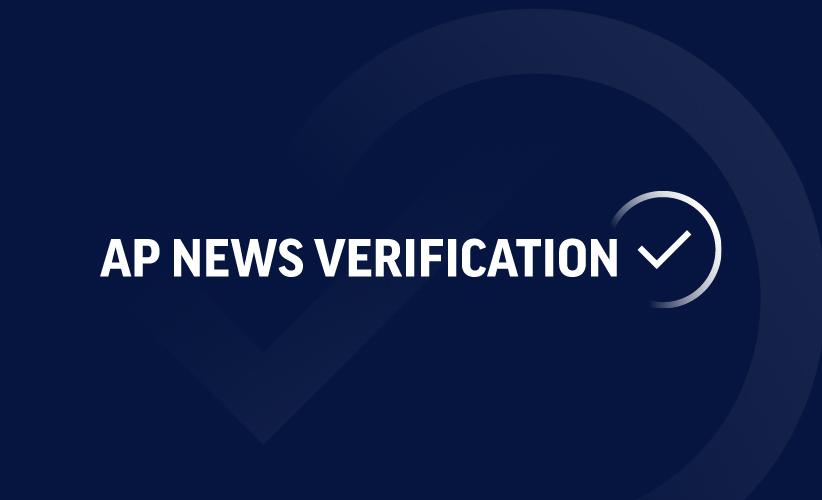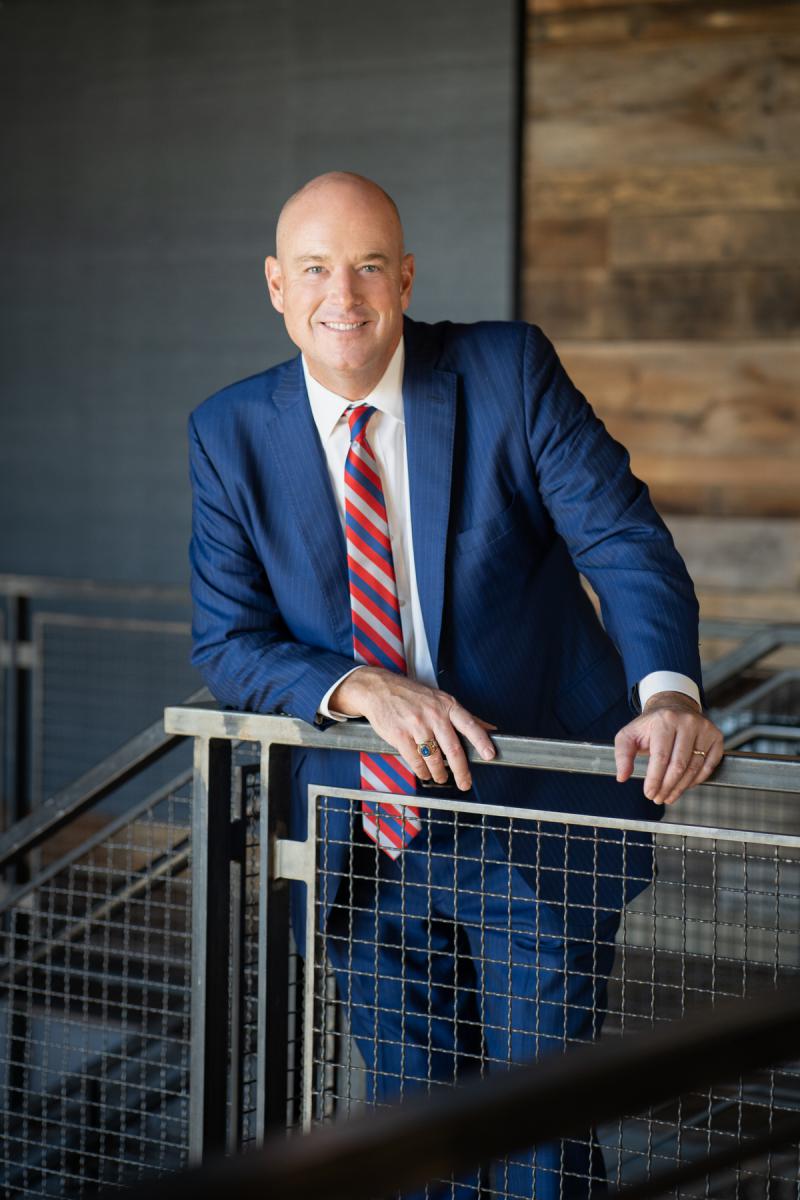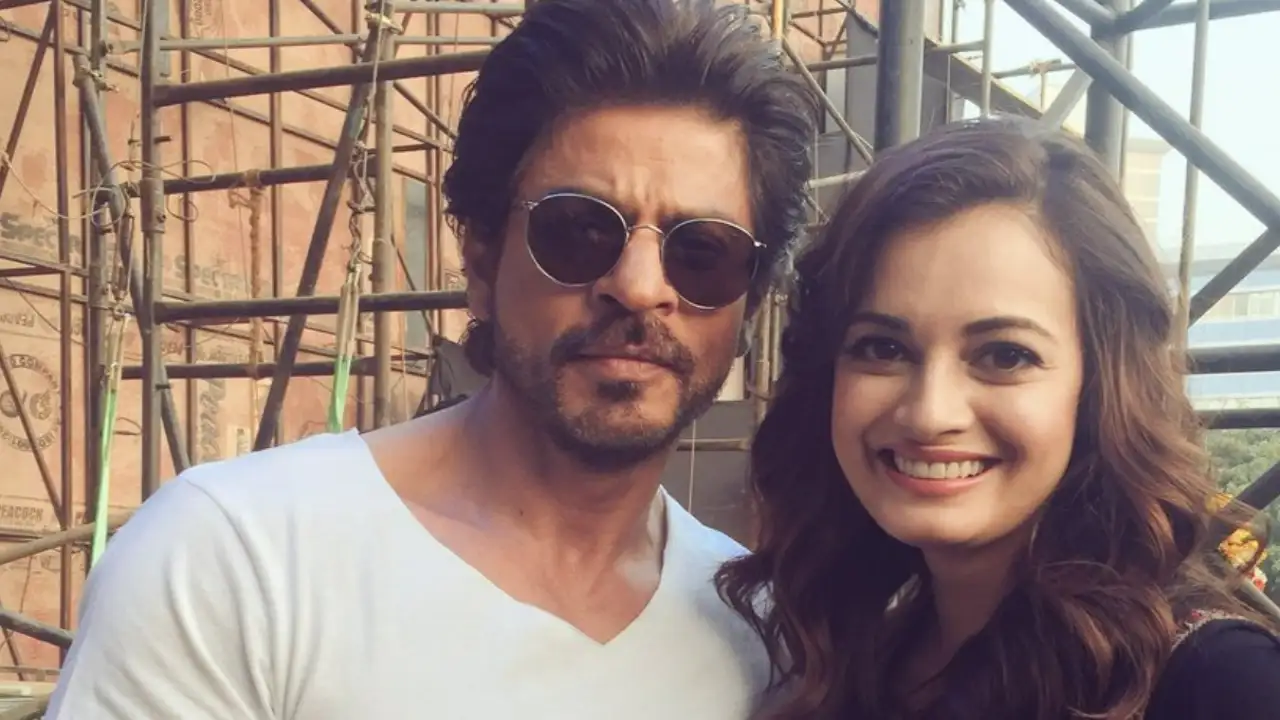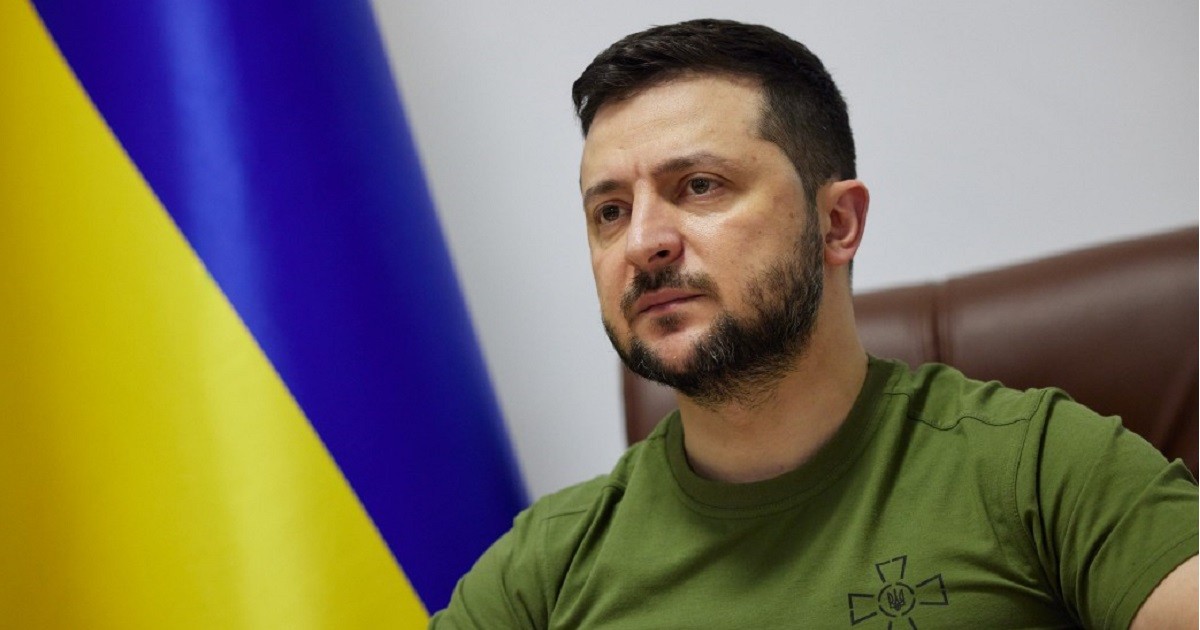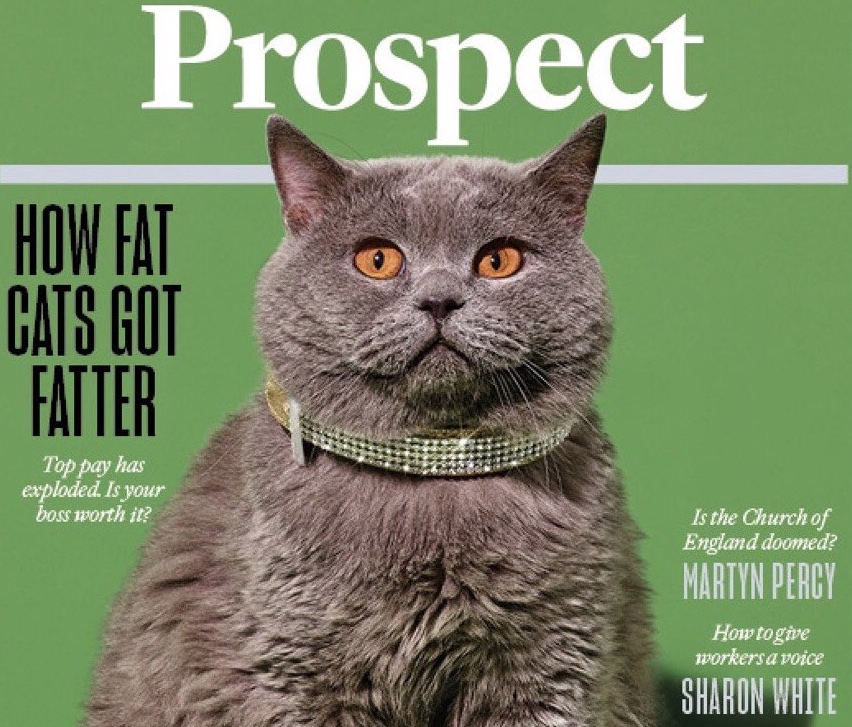The cover of TIME magazine is fully embroidered by Nneka Jones
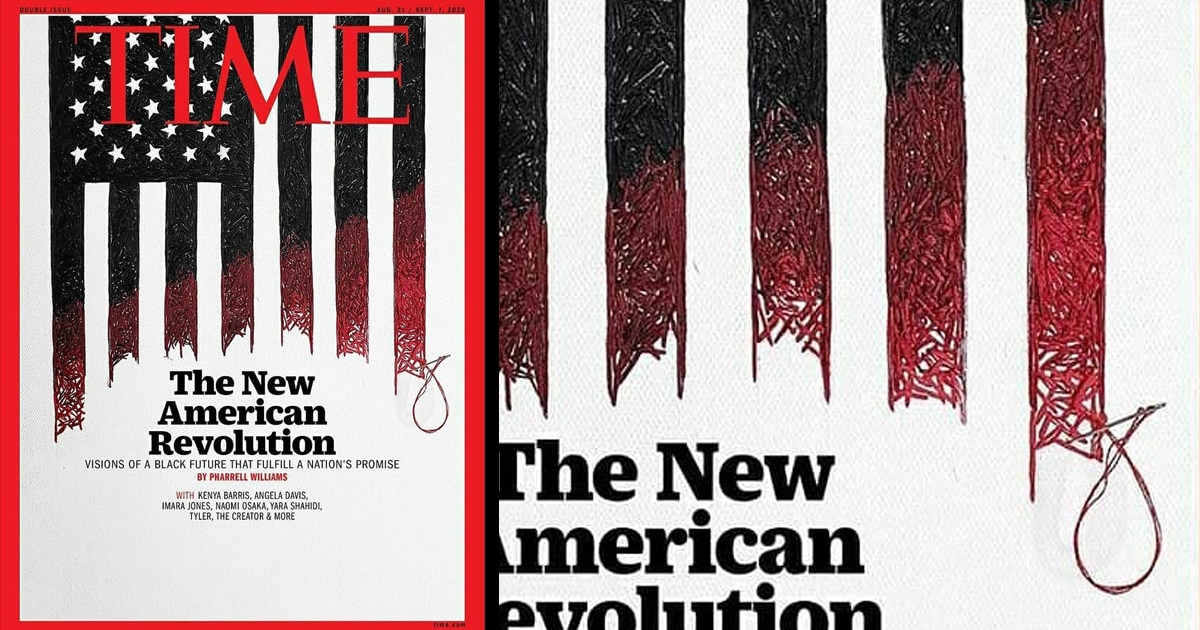
[ad_1]
Artist Nneka Jones has been busy since graduating from college four months ago. She has been recognized – and rightly so – for her portraits highlighting black girls and women who have faced injustice. The embroidered images are powerful and use circular patterns to symbolize how subjects are targets within our society. Jones’ latest project, the coveted cover of TIME magazine – takes another conceptual approach, this time applying it to the flag of the United States.
Jones’ embroidery features stars and stripes on three quarters of the magazine cover. At the top of the flag, the stitches are tight. If it weren’t for the bottom of the flag, which frames the magazine’s title and shows looser sewn stitches and a single needle, you might not realize the image was made with thread.
Everything from color choices to stitching makes sense. “I was using the traditional flag as the basis for something that was to symbolize and embody an optimistic future where everyone has a fair and equal chance,†Jones told My Modern Met. “The artistic goal was not to destroy the flag or to dishonor it in any way, but to use the same flag that everyone praised in order to highlight the inequalities and disparities that currently exist within of the nation and a call for change in order to achieve a better future. “
We had the chance to talk more with Jones about his cover of TIME magazine and learn more about the meaning behind this striking illustration. Scroll down to read our exclusive interview.
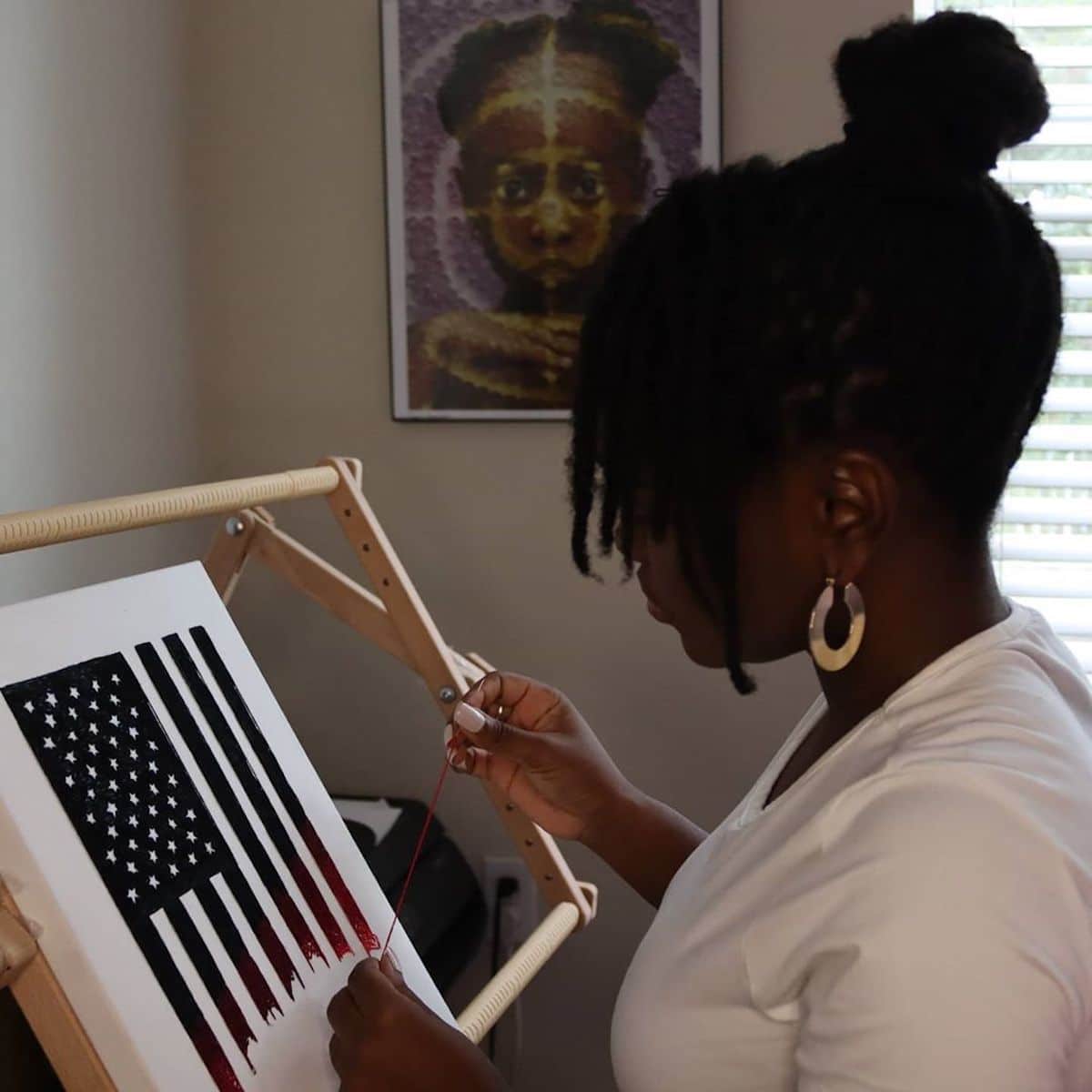 How the TIME magazine commission coming?
How the TIME magazine commission coming?
Being ordered by TIME magazine to produce cover illustrations is all surreal. Victor Williams, artistic director of TIME seen my work on Instagram during the Black Lives Matter protests. He noticed the portrait I made of George Floyd and after browsing my Instagram (@artyouhungry) noticed that most of the portraits I do are hand embroidered, not painted. After contacting me via email he informed me that there was a potential assignment he wanted me to collaborate with TIME for. I was shocked and felt like I was being scammed so I did my research on him (he didn’t know) and once I confirmed he was real, I accepted !
How did you come up with the idea for this piece?
Williams and I “threw out†ideas after he gave me the general details of the project. The artistic goal was not to destroy the flag or to dishonor it in any way, but to use the same flag that everyone praised in order to highlight the inequalities and disparities that currently exist within the nation and a call for change in order to achieve a better future. .
For a more inclusive and equal future to exist, blacks and people of color must have equal opportunities to advance to leadership positions, to be visionaries, creatives, entrepreneurs, etc. This meant that I was using the traditional flag as the basis for something that was to symbolize and embody an optimistic future where everyone has a fair and equal chance. Once we agreed on an image, I only had 24 hours left to hand embroider the American flag that would be on the cover of TIME the magazine’s August 31-September 7 issues curated by Pharrell Williams.
Your image leaves the needle stuck in the fabric. What inspired this decision?
Scanning the hand-embroidered image from top to bottom, the top has very tight stitches with black thread so that it is almost impossible to see the raw canvas behind. As you descend onto the canvas, however, one will notice that the stitches become more noticeable, loose and raw.
This symbolism represents the reshaping of America to reflect a more cohesive nation but knowing that it is something that takes time and investment. This is not something that will happen overnight, and so the needle is left in the web to the right, highlighting the “work in progress” for a better nation and a fairer chance for black people and people of all ages. color.
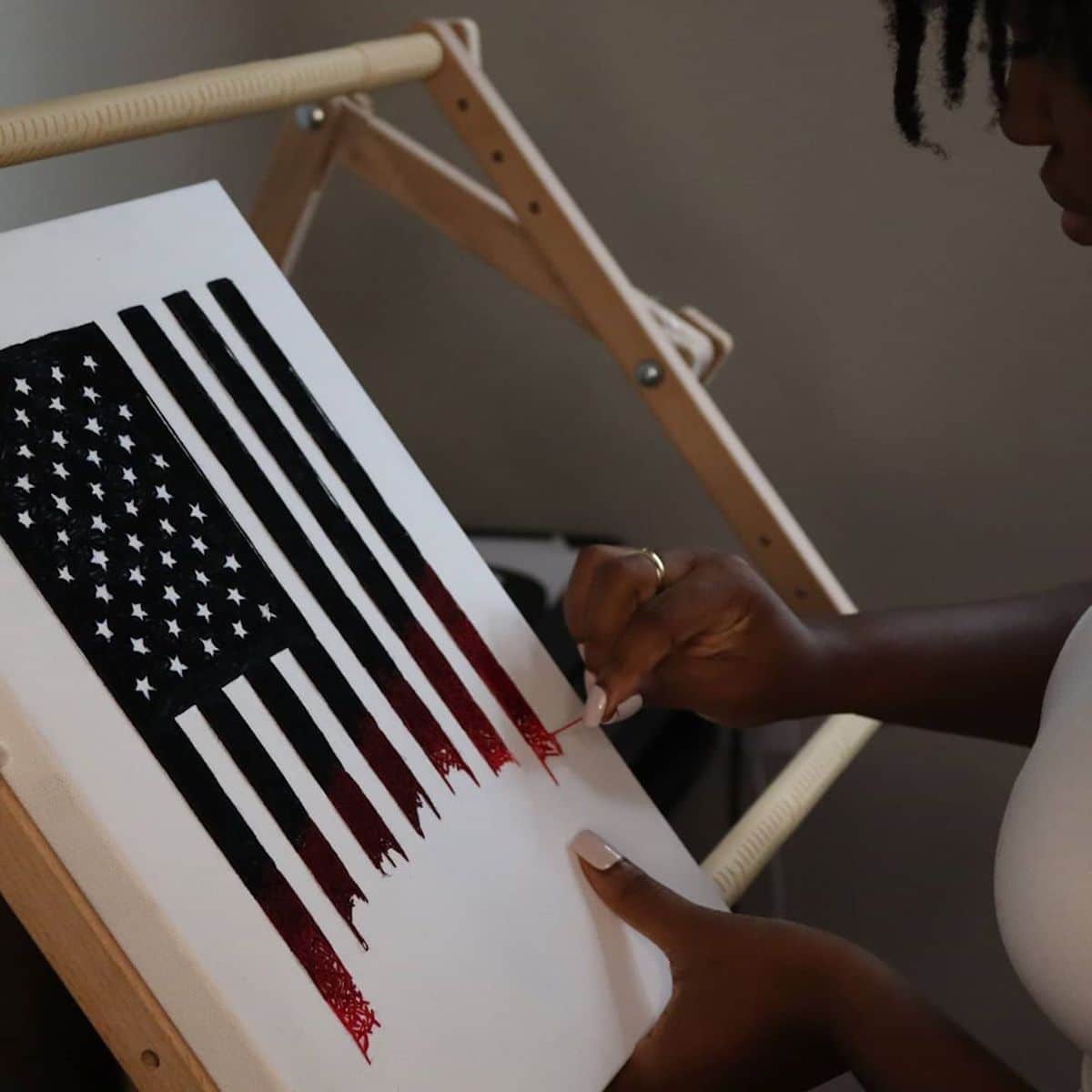 Your work focuses on portraits. What was it like to focus on the flag, a symbol, rather than on a person?
Your work focuses on portraits. What was it like to focus on the flag, a symbol, rather than on a person?
Throughout my artistic journey, I have always been fascinated by portraits and capturing the essence of someone just by focusing on the main features of their face. However, with the TIME command, I was forced to step out of my comfort zone, not only with the time limitation, but also with the change of subject and images. This allowed me to understand that as an artist, militant art comes in all shapes, colors and symbols. Just because I wasn’t finishing a hand-embroidered portrait didn’t mean I wasn’t capturing the essence of a brighter future for America.
Therefore, this piece marks an important milestone in my artistic career as it is not only the first hand-embroidered piece that I have created in less than 24 hours, it has pushed my limits as an artist and made me feel allowed to explore symbolism in a different light and for a good cause. .
The flag changes color. Can you explain what this means?
The traditional colors of the American flag are believed to symbolize and instill the unity, justice and pride of the American nation. With the news, especially in recent months, it is clear that there are disparities and divisions that need to be addressed in order to reflect this proud image of the flag. The very tight stitches using black thread at the top are symbolic of the coming together of all black people and people of color and the uplifting of black visionaries, creatives and leaders. It is an intention to show strength in numbers as evidenced by the thousands of people who marched through the streets, demanding justice and calling for a more equal nation.
This “Blackness” is not a defamation of the flag, but a symbol of optimism for the reshaping of America. The transition to red shows that it’s not just the efforts of blacks and people of color that matter, but the nation as a whole, and in order to reshape and maintain something new, everyone needs to be on board. .
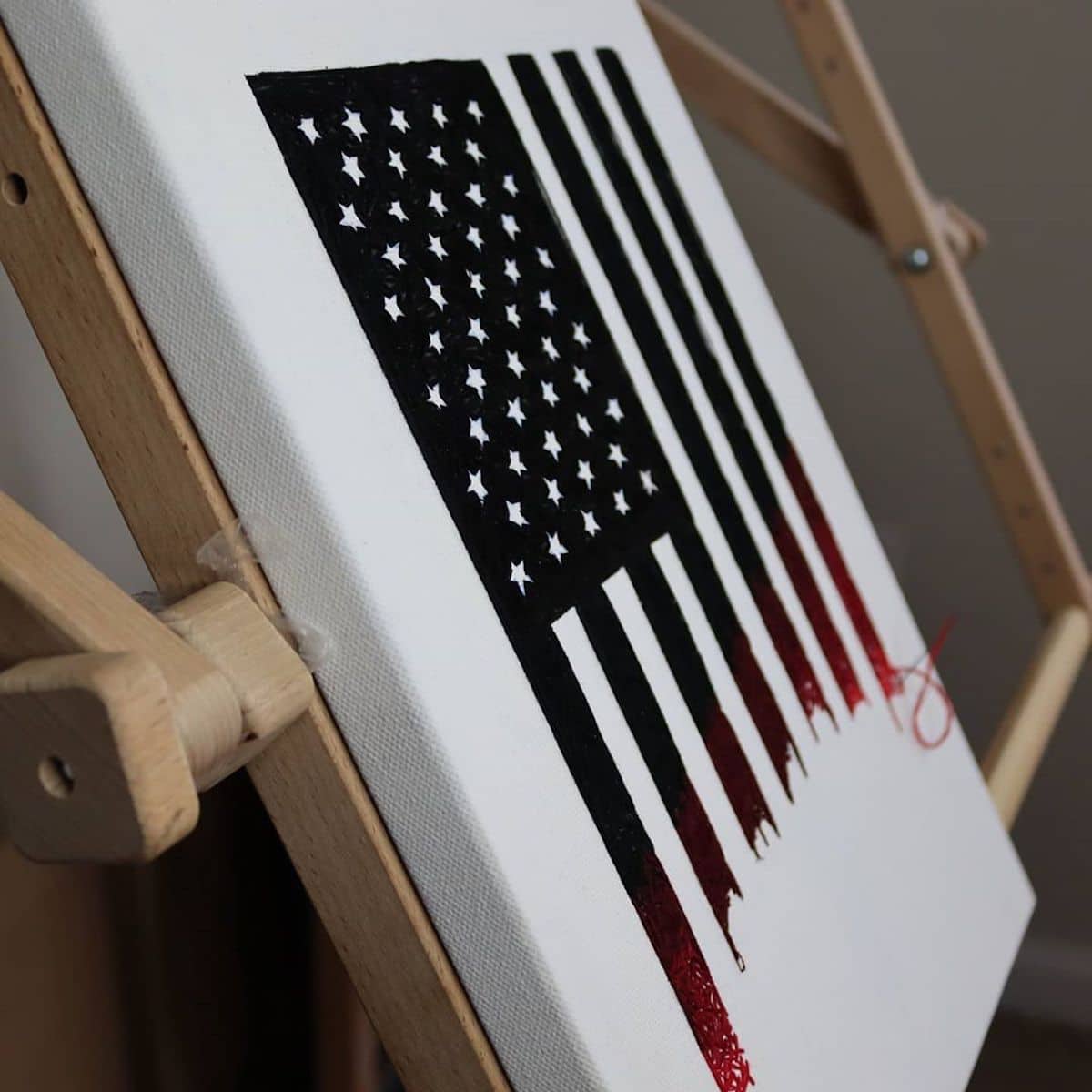 You recently graduated from college and having an illustration on the cover of a major magazine is a huge accomplishment. What was this flash of light for you?
You recently graduated from college and having an illustration on the cover of a major magazine is a huge accomplishment. What was this flash of light for you?
Making the decision to pursue a career in the arts was difficult, but it was well worth it. I am extremely happy to have realized my passion and to have developed a plan to work towards the career of my dreams. The University of Tampa has provided me with a solid foundation in the arts and has given me many opportunities to build my artistic portfolio through exhibitions, festivals, student performances, internships, etc. It paved the way I am now, independently as a full-time artist, but I never thought that my education and persistence would have given me the opportunity to land on the cover of TIME magazine just four months after graduating. I hope to continue working to realize my dream of becoming an internationally renowned artist, my next goal being a personal exhibition.
Is there anything else you are working on that you can tell us about?
I am currently excited about the launch of my first book, Targeted truth, which compiles all the hand-embroidered pieces in my Target and Various targets series, as well as highlights my journey and my discovery of embroidery. This book is perfect for budding artists and those who just love the art of embroidery, as it also gives high definition close-up images of my work. This can be pre-ordered from my online store.
Nneka Jones: Website | Instagram | Facebook
My Modern Met has granted permission to display photos of Nneka Jones.
Related Articles:
Quilted portraits pay homage to the stories of black men and women forgotten by history
Artist creates portraits of blacks killed by police, one minute of color for each year of life [Interview]
Glittering golden portraits celebrate the beauty of dark hair in the style of Gustav Klimt paintings
[ad_2]

